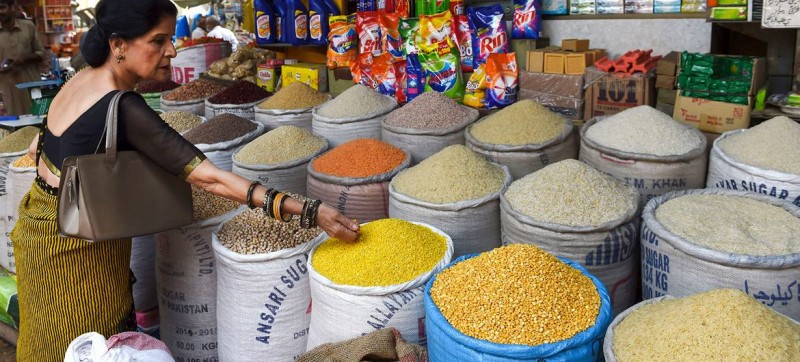A woman selects pulses at a market in downtown Karachi, Pakistan. The UN marks World Pulses Day on Thursday, this year celebrating how these nutritious beans, grains and seeds, crucial to so many cuisines worldwide, can empower youth to help achieve sustainable commercial farming (agrifood) systems. Focused on the key role young people play in shaping a better future for food, the UN Food and Agriculture Organization (FAO) is holding an online event with testimonies and perspectives from youth representatives. On twitter, the agency’s Director-General, QU Dongyu, said he was calling on youth “to support the transformation of agrifood systems to be more sustainable, to help achieve the Sustainable Development Goals.”
On this year's #WorldPulsesDay, I call on youth to support the transformation of agrifood systems to be more sustainable, to help achieve the #SDGs.
Pulses play a vital role in addressing the challenges of food security, human nutrition, soil health & the climate crisis. pic.twitter.com/OEHjbXpA8L
— FAO Director-General QU Dongyu (@FAODG) February 10, 2022
Youth as a bridge
According to the agency, pulses create economic, social and environmental opportunities, but for the adoption of pulse-driven agriculture, young people must be at the centre of any strategy.
“Youth can act as a bridge between traditional farming techniques and new technologies, helping to make agriculture more sustainable and nutrition-sensitive”, the agency says in a note about the event.
They can also bring added value to the promotion of pulses by shedding light on new business opportunities along the value chain.
What are pulses?
Pulses, also known as legumes, are the edible seeds of leguminous plants cultivated for food.
Dried beans, lentils and peas are the best known and consumed types of pulses, but there are several varieties more from around the world, all which provide great benefits for food security, nutrition, health, slowing climate change, and maintaining biodiversity.
Staples dishes and cuisines from across the world feature pulses, from hummus in the Mediterranean (chickpeas), to a traditional full English breakfast (baked beans) to Indian dal (peas or lentils).
Pulses do not include crops that are harvested green (like green peas, green beans), that are classified as vegetable crops. Also excluded are those crops used mainly for oil extraction (soybean and groundnuts) and leguminous crops that are used exclusively for sowing purposes (like seeds of clover and alfalfa).
Health and economic benefits
Pulses are packed with nutrients and have a high protein content, making them an ideal source of protein particularly in regions where meat and dairy are not physically or economically accessible.
They are also low in fat and rich in soluble fibre, which can lower cholesterol and help in the control of blood sugar.
Because of these qualities, they are recommended by health organizations for the management of non-communicable diseases like diabetes and some heart conditions. Pulses have also been shown to help combat obesity.
For farmers, pulses are an important crop because they can both sell them and consume them, which helps farmers maintain household food security and economic stability.

A variety of pulses on display in a market in Cairo, Egypt., by © FAO/Pedro Costa Gomes
Climate
Pulses also have nitrogen-fixing properties that improve soil fertility, by increasing and extending the productivity of farmland.
By using pulses for intercropping and cover crops, farmers can also promote farm biodiversity and soil biodiversity, while keeping harmful pests and diseases at bay.
Furthermore, pulses can contribute to climate change mitigation by reducing dependence on the synthetic fertilizers used to introduce nitrogen artificially into the soil.
Greenhouse gases are released during the manufacturing and application of these fertilizers, and their overuse can be detrimental to the environment.
The General Assembly designated 10 February as World Pulses Day in 2019, building on the success of the International Year of Pulses (IYP) in 2016, implemented by FAO.




Comments are closed.